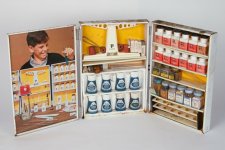If the hypothesis is it is a mixture of inorganic salts then it can be tested fairly easily in a high school laboratory or even a home laboratory for cations and anions.
Without referring to google - just trusting my memory from 30 years ago
1. Cation group can be confirmed by a structured group test. Unfortunately I forgot the procedure but will come back fairly easily with google or my sons chemistry book
2. Potassium can be confirmed by a flame test. Just put a pinch in a platinum wire and burn it in your kitchen gas flame. Potassium turns the flame pink
3. Nitrate ions can be confirmed by a ring test (Need to google on how to do it)
The tests #3 and #2 are confirmation tests. #1 is a classification test for cations. I forgot what was a classification test for anions.
I am not interested to go down that rabbit hole though.
Without referring to google - just trusting my memory from 30 years ago
1. Cation group can be confirmed by a structured group test. Unfortunately I forgot the procedure but will come back fairly easily with google or my sons chemistry book
2. Potassium can be confirmed by a flame test. Just put a pinch in a platinum wire and burn it in your kitchen gas flame. Potassium turns the flame pink
3. Nitrate ions can be confirmed by a ring test (Need to google on how to do it)
The tests #3 and #2 are confirmation tests. #1 is a classification test for cations. I forgot what was a classification test for anions.
I am not interested to go down that rabbit hole though.




















